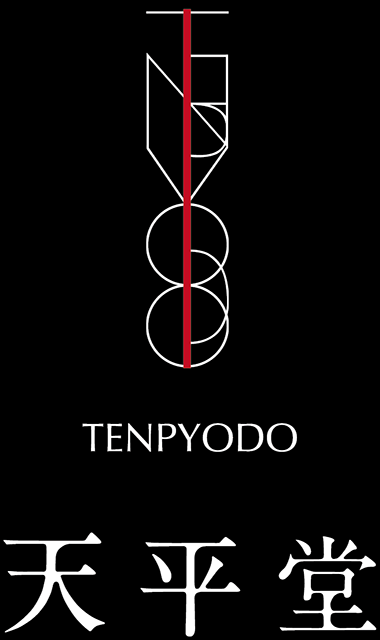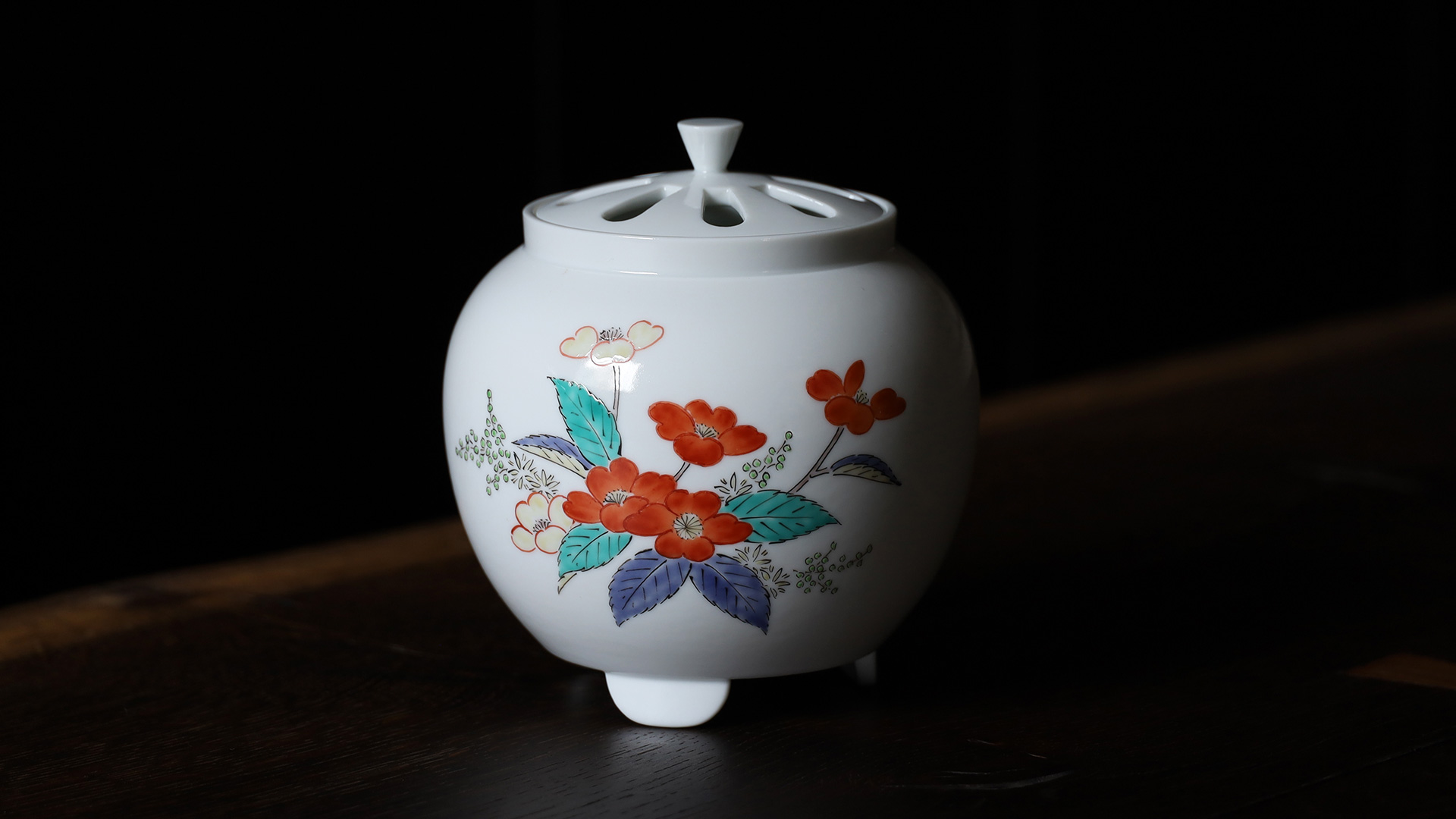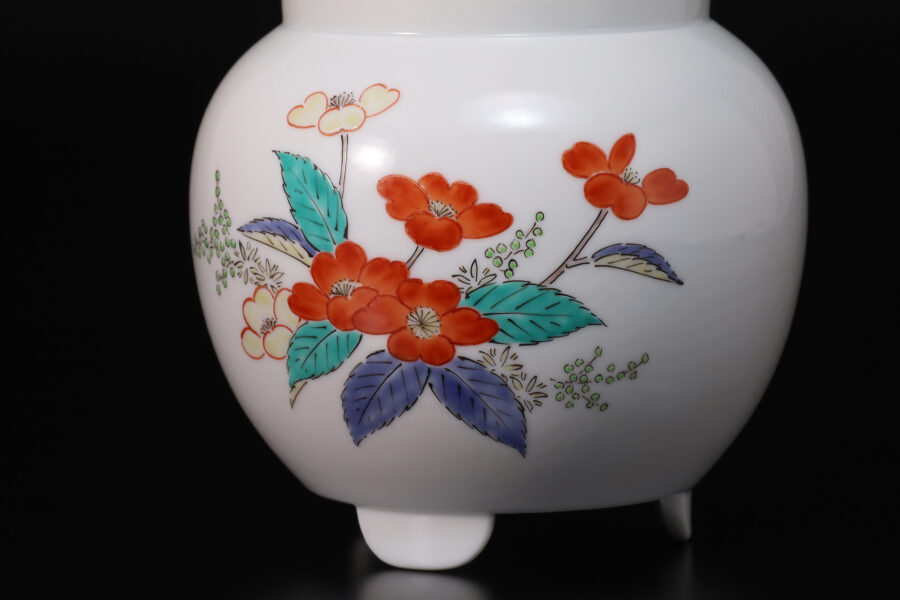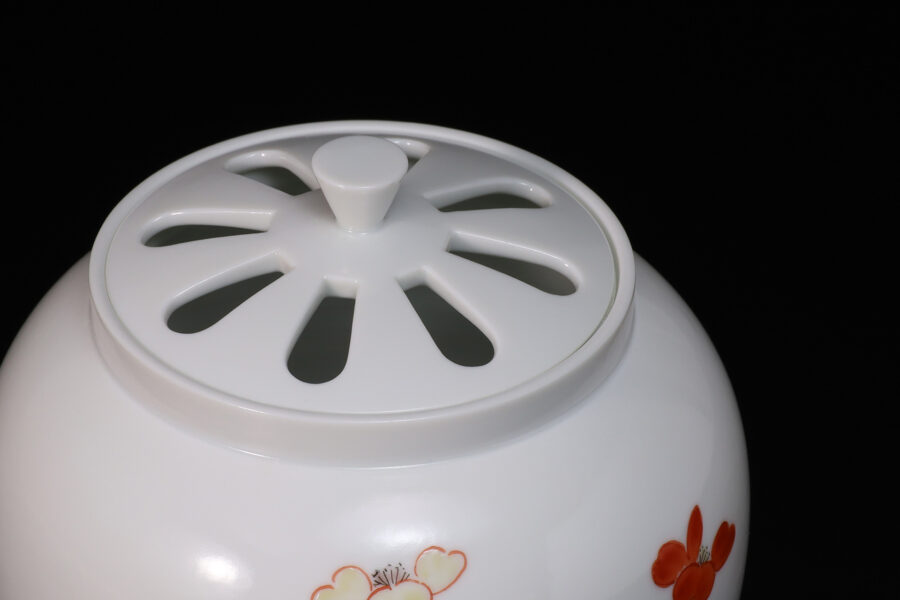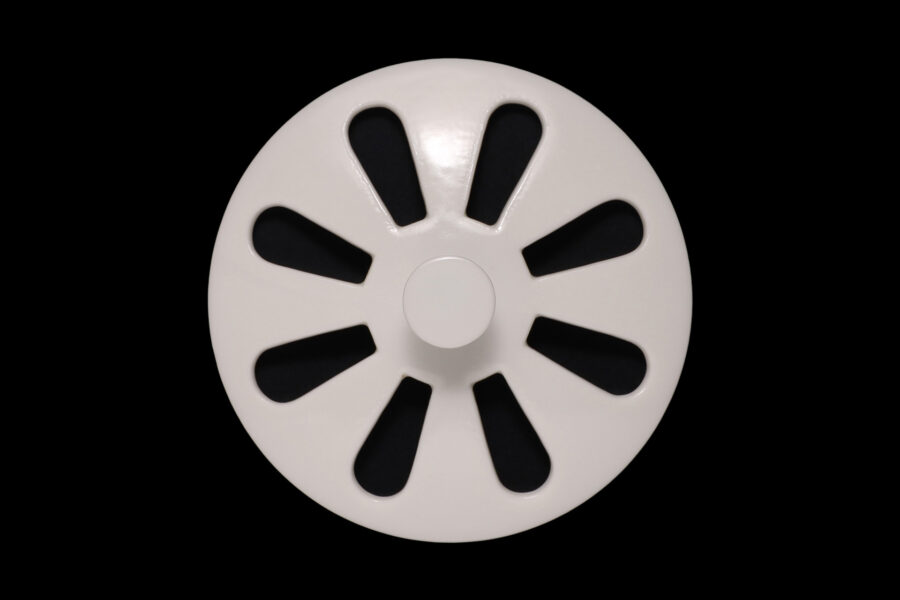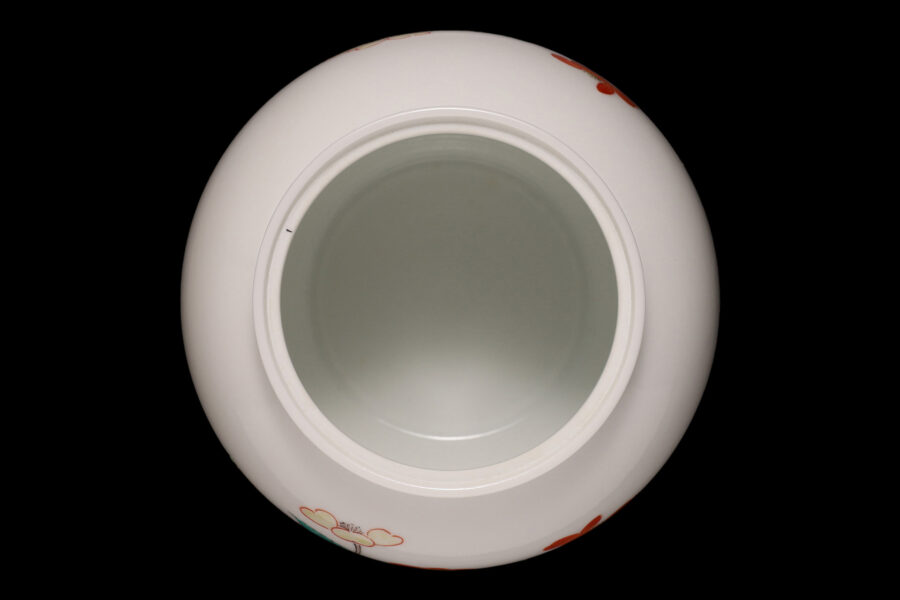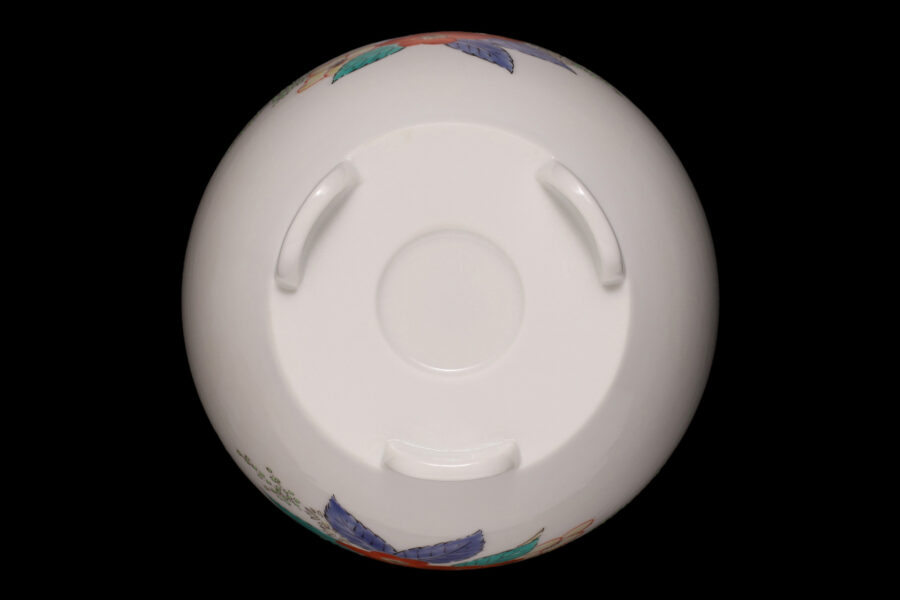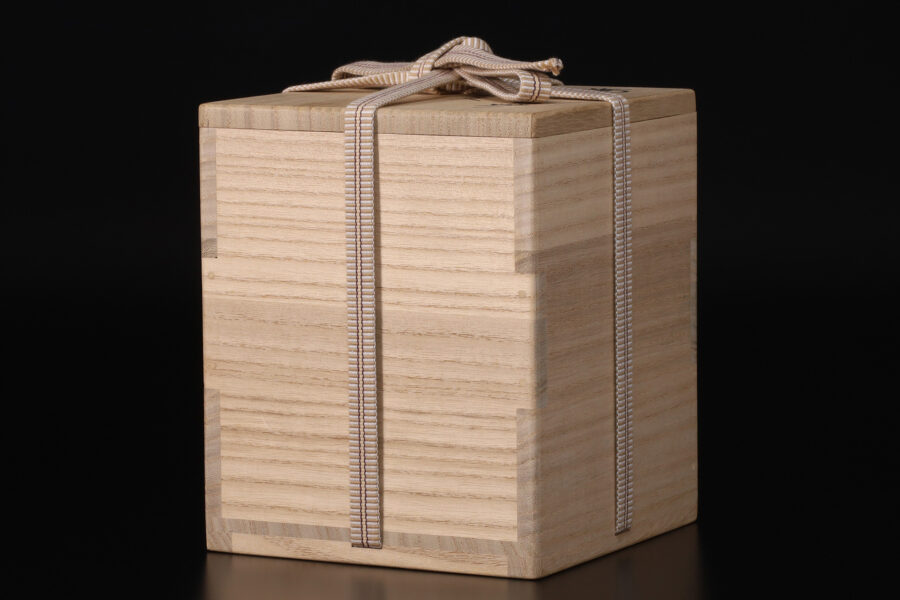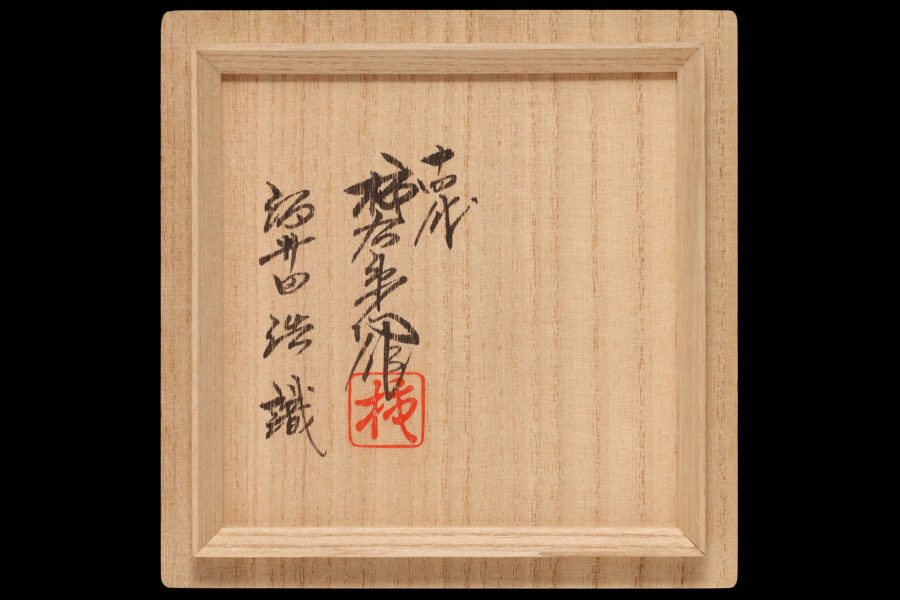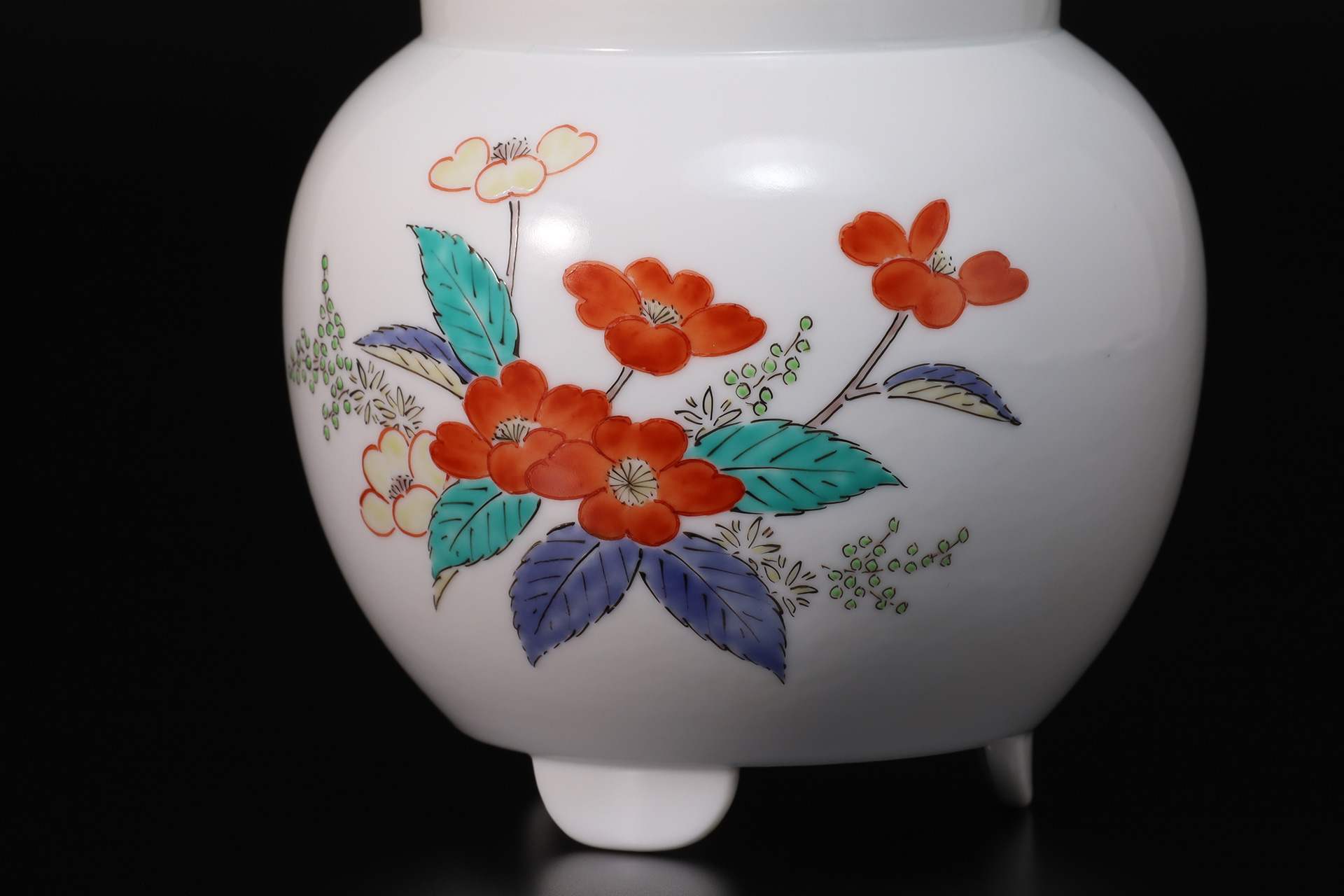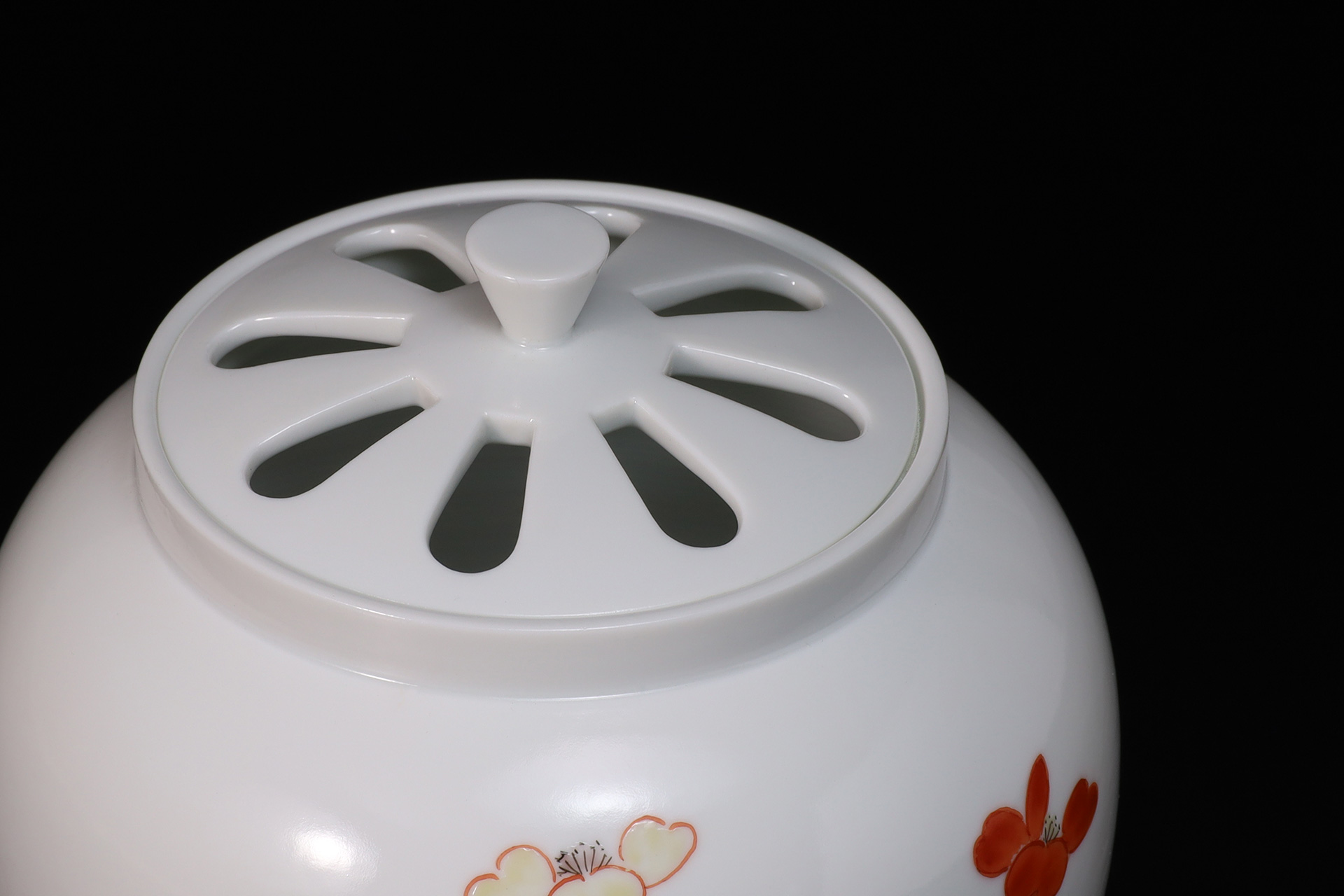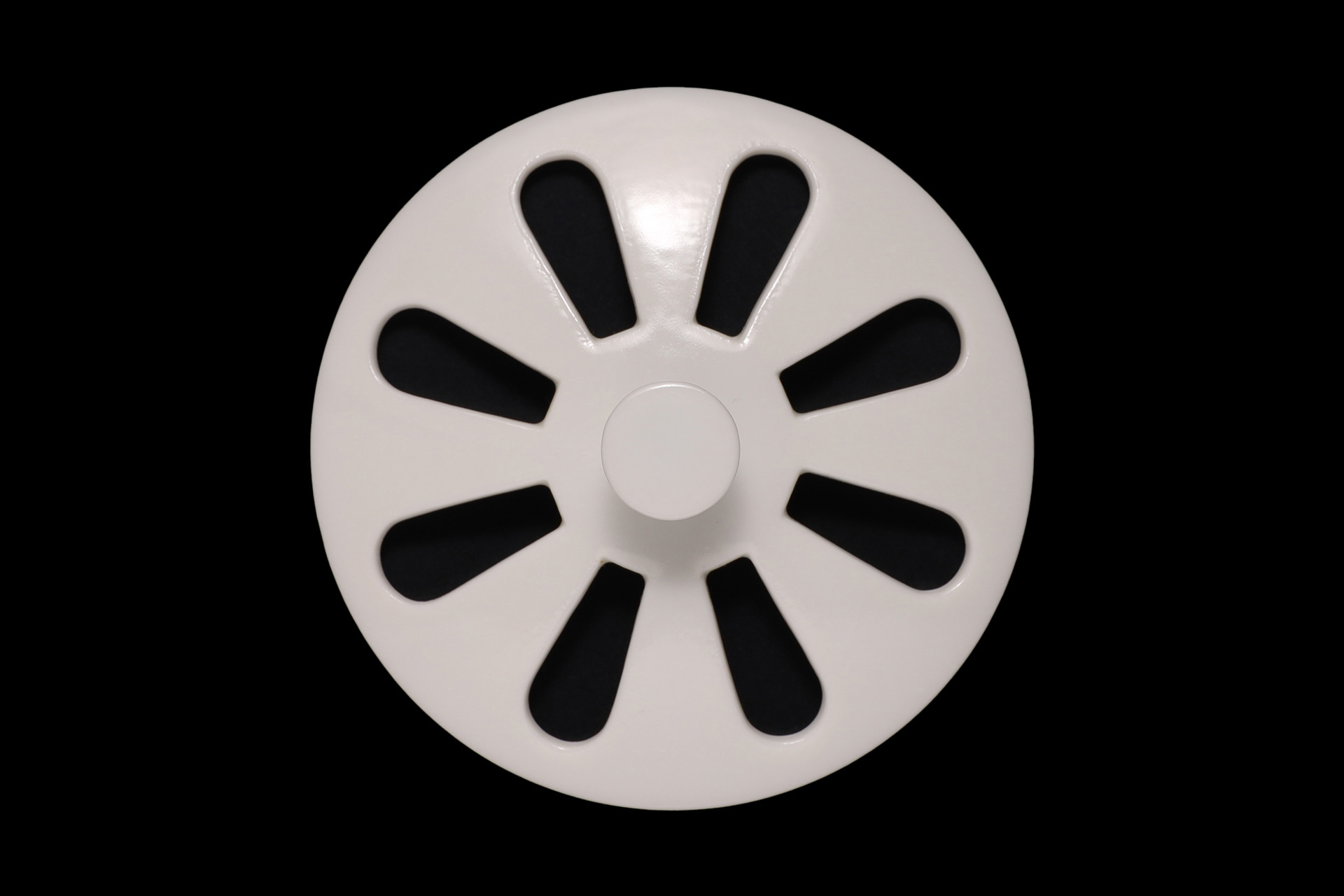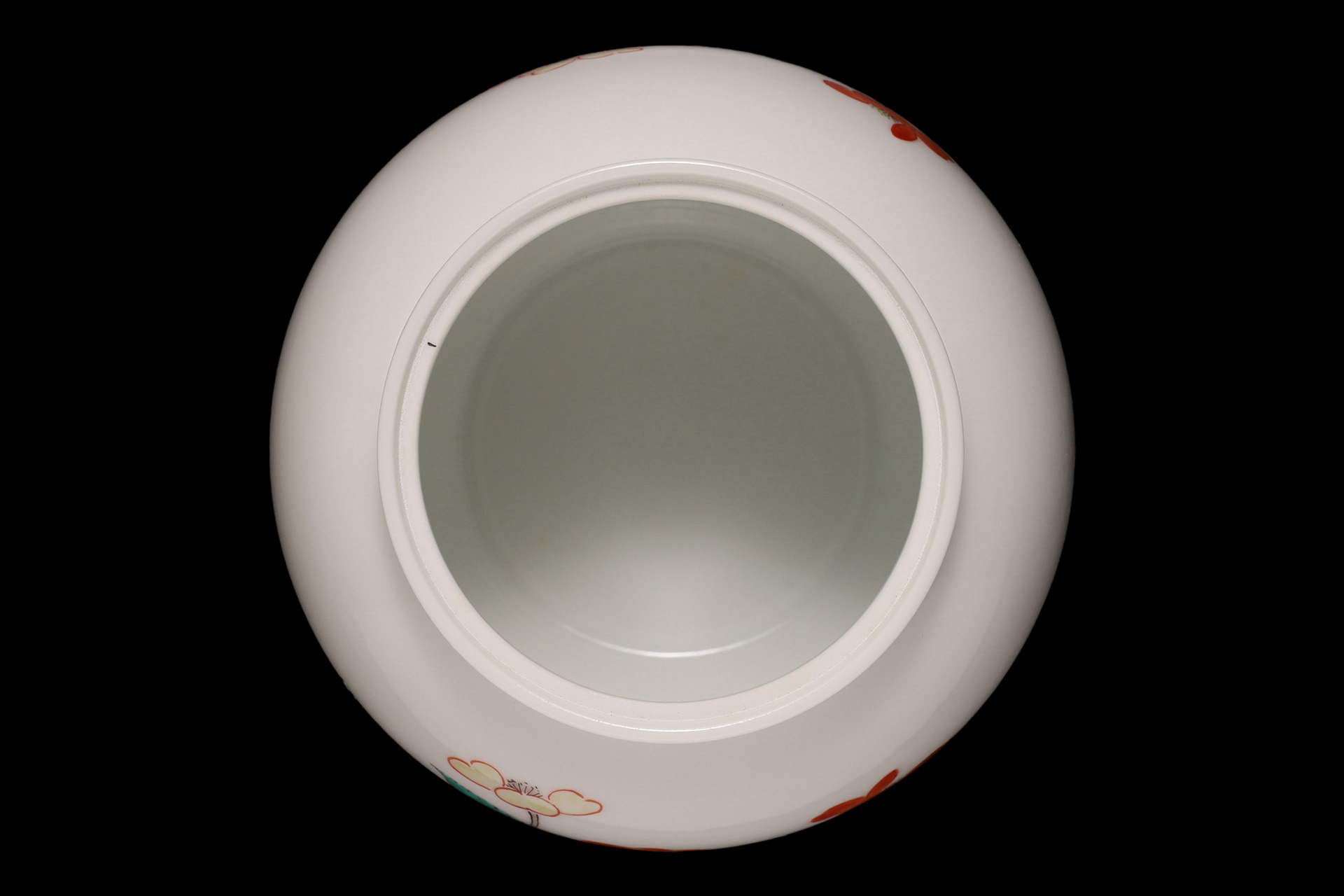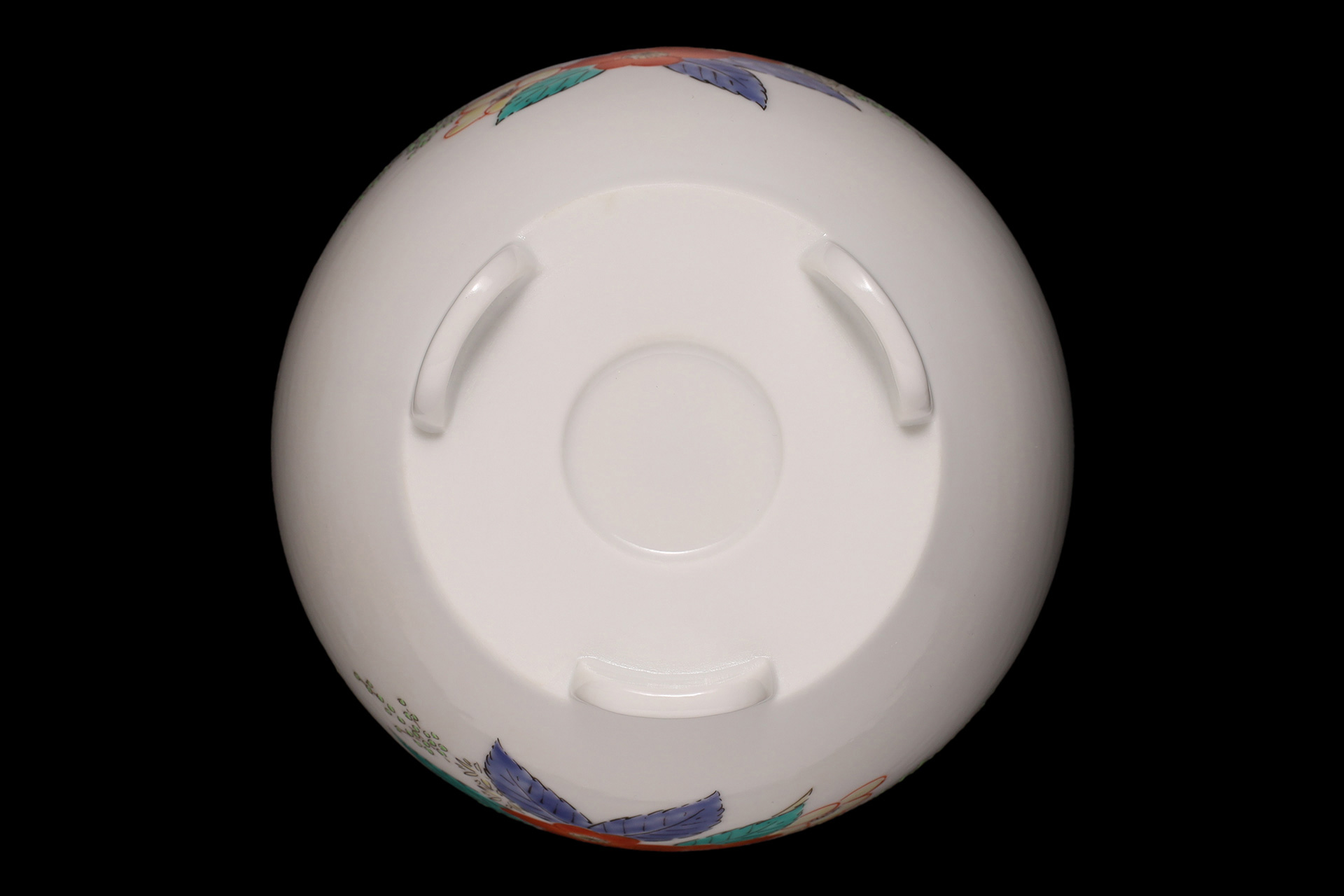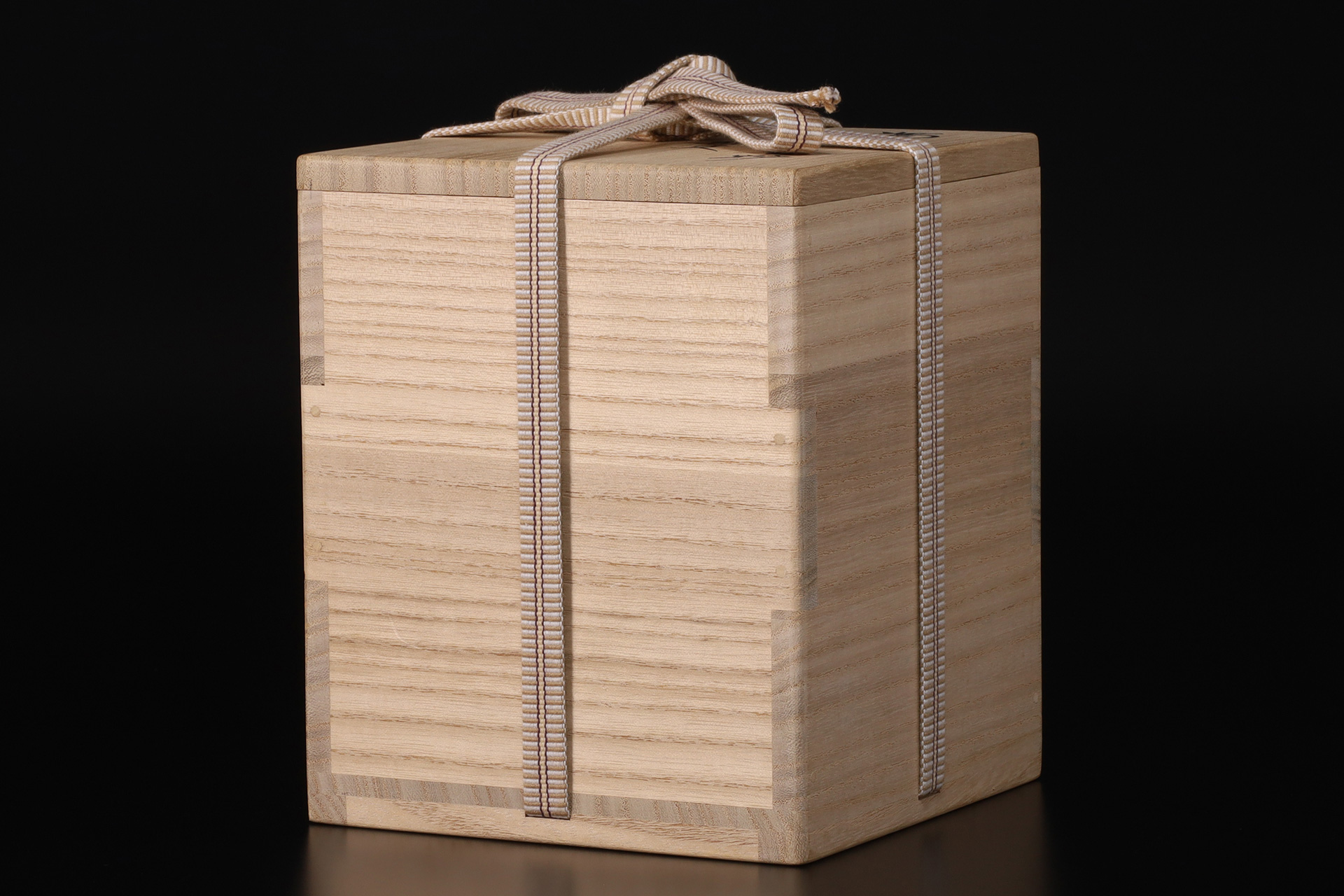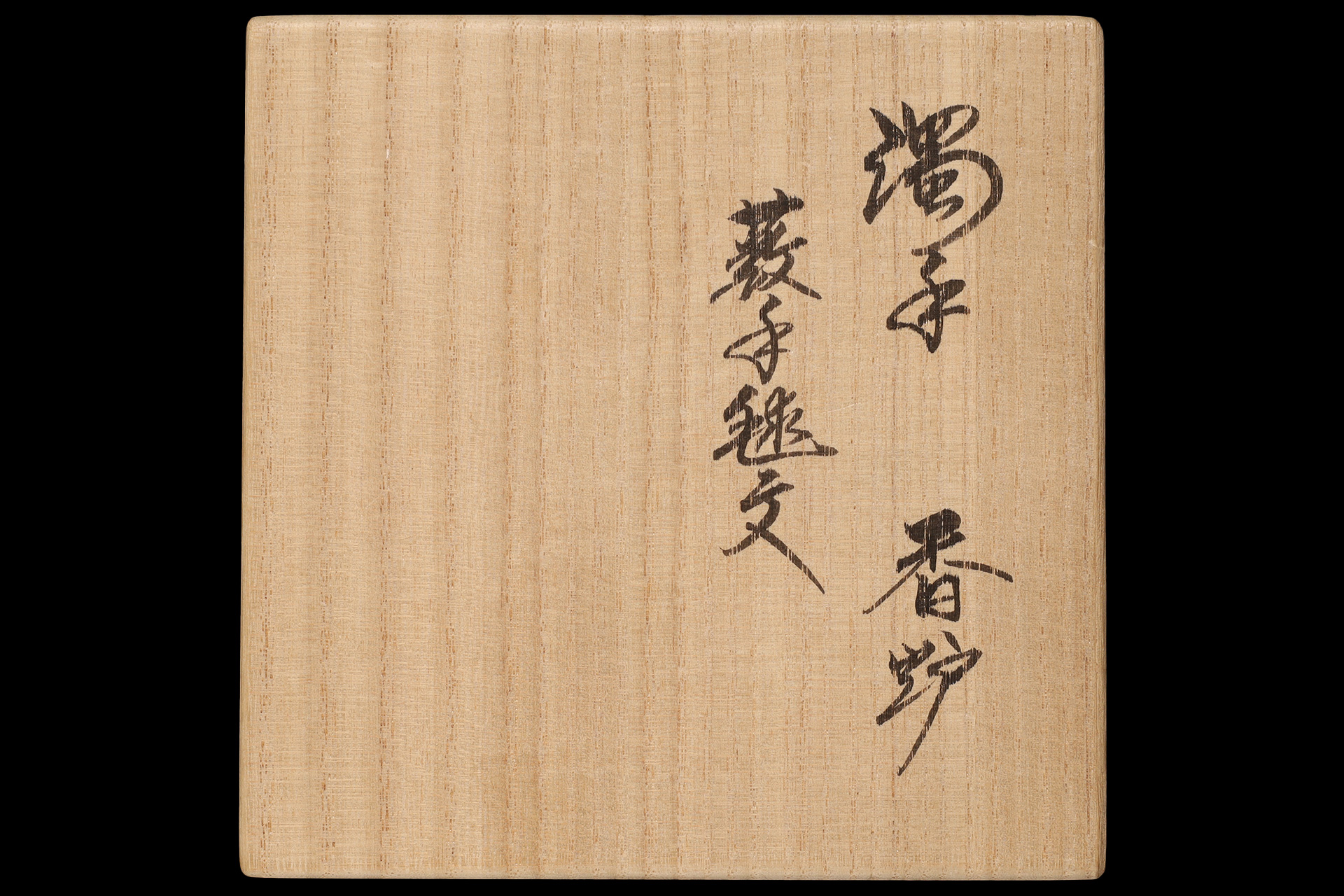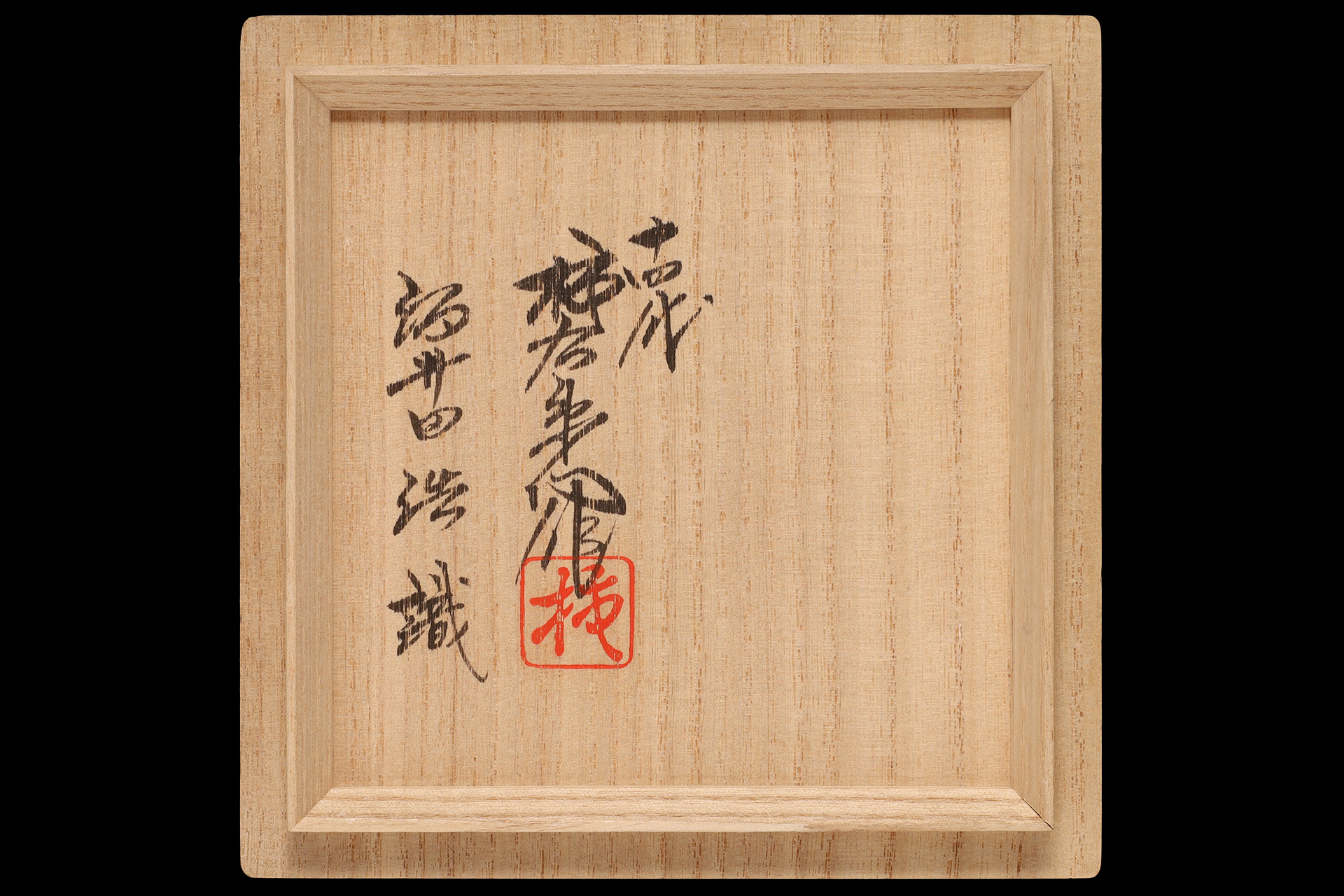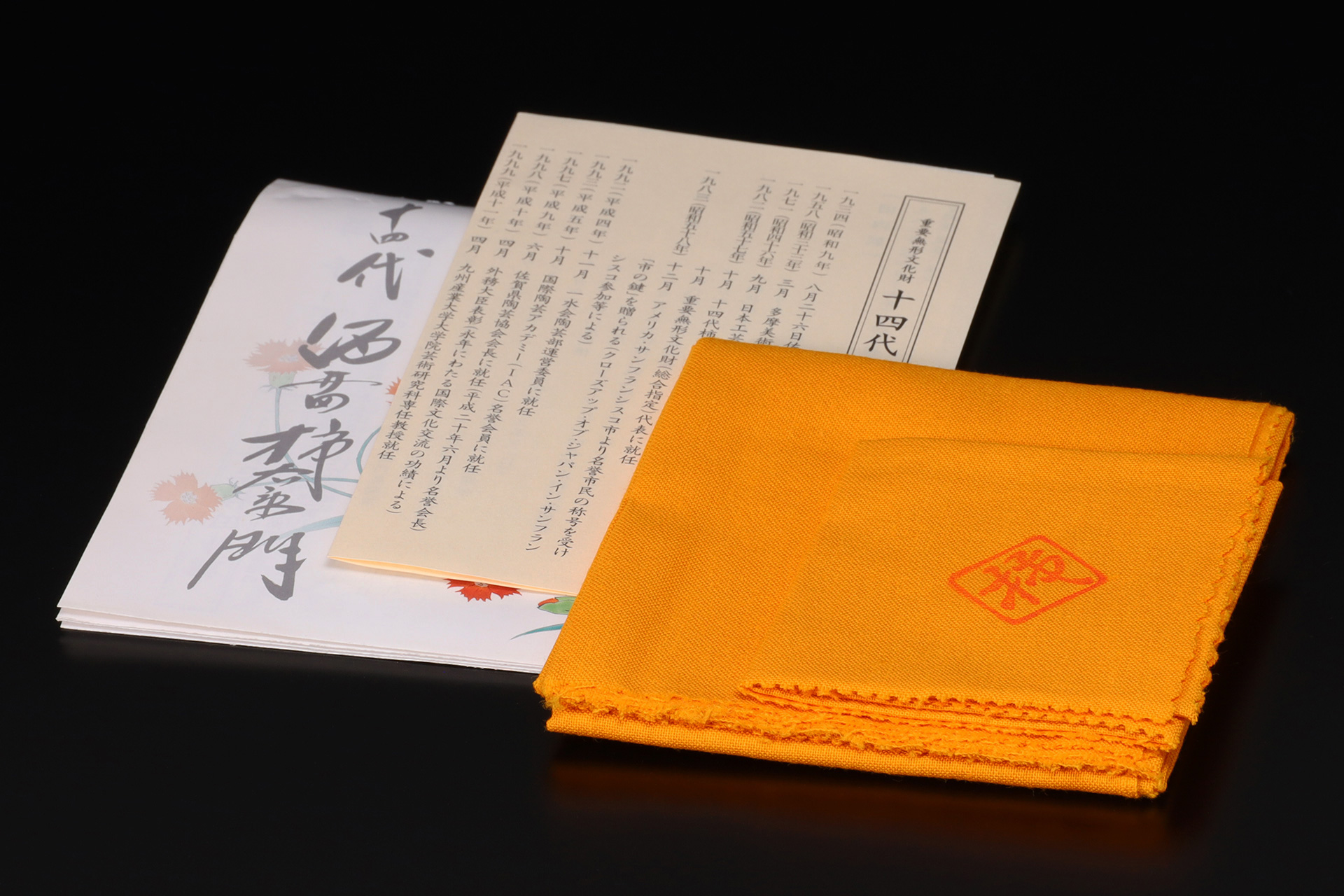Nigoshide Incense Burner with Yabu-Temari Motif (Sakaida Kakiemon XIV)
170,000Yen(Tax Included)
This incense burner is gracefully adorned with a Yabu-temari motif rendered on a softly textured nigoshide glaze. Its dignified form, vivid coloration, and refined use of empty space harmonize to create a poised and elegant presence—imbued with a solitary radiance that quietly anchors the surrounding space.
Inquiry
- Artist
- Sakaida Kakiemon XIV
1934-2013
Living National Treasure
- Weight
- 369g
- Width
- 10.9cm
- Mouth Diameter
- 7.6cm
- Height
- 11.8cm
- Fittings
- Authentication Box by Hiroshi Sakaida
Original Wrapping Cloth
Artist Biography Insert
- Condition
- Intact
It remains in excellent condition.
Sakaida Kakiemon XIV 1934-2013
Sakaida Kakiemon XIV was born in Saga Prefecture as the eldest son of Sakaida Kakiemon XIII. His given name was Masashi.
In 1958, after graduating from the Japanese Painting Department of Tama Art University, he returned to his hometown and studied under the Sakaida Kakiemon XII and XIII.
In 1967, he received the President’s Prize from the Issuikai.
In 1971, he became a full member of the Japan Kōgei Association.
In 1982, he succeeded to the name Sakaida Kakiemon XIV.
He was appointed Director of the Japan Kōgei Association and President of the Kakiemon Ceramic Technique Preservation Society.
In 1983, he was awarded honorary citizenship by the City of San Francisco, USA.
In 1984, he received the Japan Ceramic Society Prize and the Governor of Saga Prefecture Award.
In 1986, he was awarded the Japan Kōgei Association Encouragement Prize.
In 1992, he became a member of the Issuikai Ceramics Division Steering Committee and again received the Encouragement Prize from the Japan Kōgei Association.
In 1993, he was named an honorary member of the International Academy of Ceramics (IAC).
In 1994, he was appointed Auditor for the Japan Traditional Craft Exhibition.
In 1997, he became President of the Saga Prefecture Ceramic Association.
In 1998, he received the Foreign Minister’s Commendation.
In 1999, he was appointed Professor at the Graduate School of Art at Kyushu Sangyo University and received the Minister of Education’s Commendation.
In 2000, he became President of the Arita Ceramic Association.
In 2001, he was appointed Principal of the Saga Prefectural Arita College of Ceramics and was designated a Living National Treasure for overglazed enamel porcelain. He also received the Saga Shimbun Cultural Award.
In 2005, he was awarded the Order of the Rising Sun, Gold Rays with Neck Ribbon, and was named an Honorary Citizen of Arita Town.
In 2006, he became Vice President of the Japan Kōgei Association.
In 2007, he received the Western Japan Cultural Award.
While faithfully preserving traditional techniques, he developed a creative world that incorporated contemporary sensibilities. As a master of modern Kakiemon ware, he left a profound legacy in both the beauty and spirit of overglazed porcelain.
Nigoshide
The technique known as “Nigoshide,” emblematic of the peak of the Kakiemon-style, derives its name from the Saga dialect word nigoshi, meaning “rice-washing water.” True to its name, it is distinguished by a warm, milky-white porcelain base. Internationally, it came to be known as “Milky-White” and was highly esteemed as an ideal white porcelain that accentuates the vividness of overglaze enamel decoration. Unlike standard white porcelain or blue-and-white porcelain, Nigoshide lacks any bluish tint. Its soft-toned surface harmonizes with the painter’s brushwork and the intentional use of blank space, giving rise to the graceful chromatic beauty unique to the Kakiemon tradition. To achieve this refined base, impurities such as iron must be meticulously removed from the porcelain stone and glaze materials. The glaze is applied in an exceptionally thin layer, and as a rule, Nigoshide is not used in combination with underglaze blue decoration. According to the “Doai-chō” (Clay Composition Ledger) handed down in the Sakaida family, dated 1690, the blend ratio for the Nigoshide base was recorded as 6:3:1, using ceramic stones from Izumiyama, Shirakawa, and Iwayagawachi respectively. Due to differing shrinkage rates during firing, many works were damaged – only about 50% of flat wares such as dishes, and roughly 20% of three-dimensional forms like jars, were successfully completed. This low yield is considered one of the reasons Nigoshide production eventually ceased. Nigoshide represented a supreme technical innovation developed for export to Europe, and it became established as the highest-quality white porcelain base within the Kakiemon-style. Its peak is believed to have occurred during the Enpō era (1673–81), with exemplary works likely fired at the Nangawara-Kamanotsuji kiln. Records suggest that as early as the 1650s, experimental production of porcelain bases specifically for overglaze enamel decoration had begun at the Kusunokidani kiln. However, these early attempts were marked by coarse forming and residual traces of iron, and had not yet achieved refinement. From the 18th century onward, as porcelain exports declined, Nigoshide also disappeared from production. It was not until 1953 that the Sakaida Kakiemon XII and XIII masters successfully revived the technique. The origin of the term Nigoshide remains unclear, and since it does not appear in Edo period documents, it is thought to be a modern designation, likely coined in the early Shōwa period.
The distinction between Nigoshide and Nishikide
Sakaida Kakiemon XIV regarded Nigoshide works crafted by his own hand as “personal creations,” clearly distinguishing them from Nishikide wares—mass-produced high-grade furnishings—which he classified as “kiln works.” This distinction extended to both their intended use and production system. Nigoshide pieces (personal creations) adhered to the principle of being unsigned, while Nishikide wares (kiln works) bore underglaze blue marks. The production of Nigoshide was entrusted to elite artisans of the Kakiemon Pottery Technique Preservation Society, who rigorously inherited traditional techniques while pursuing a solitary form of expression that transcended mere imitation of the past.
